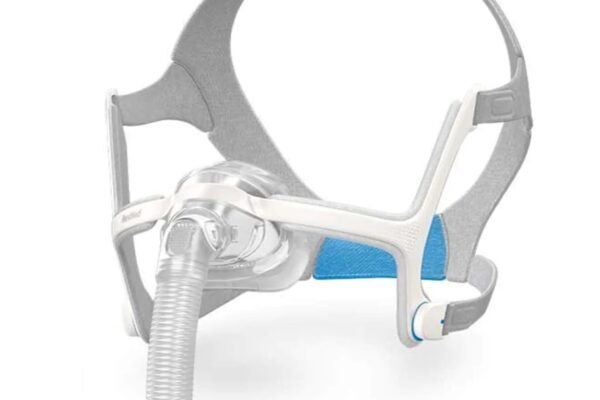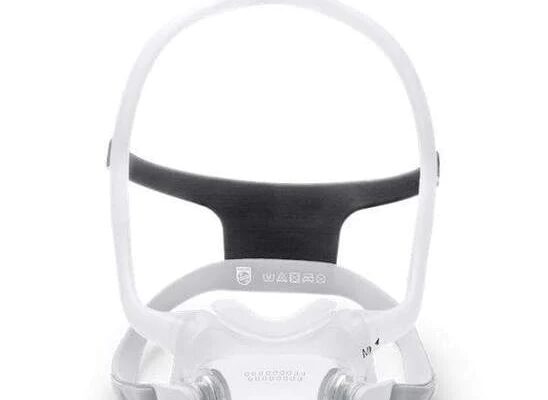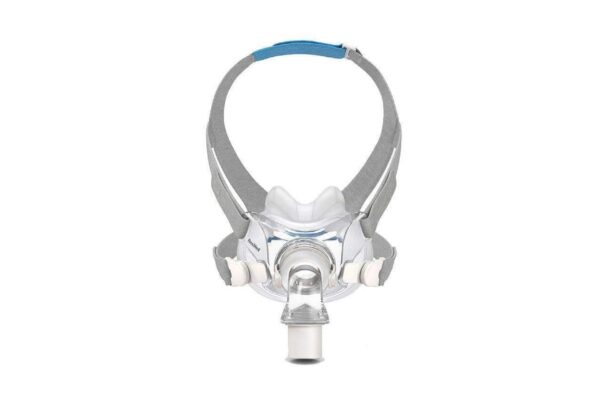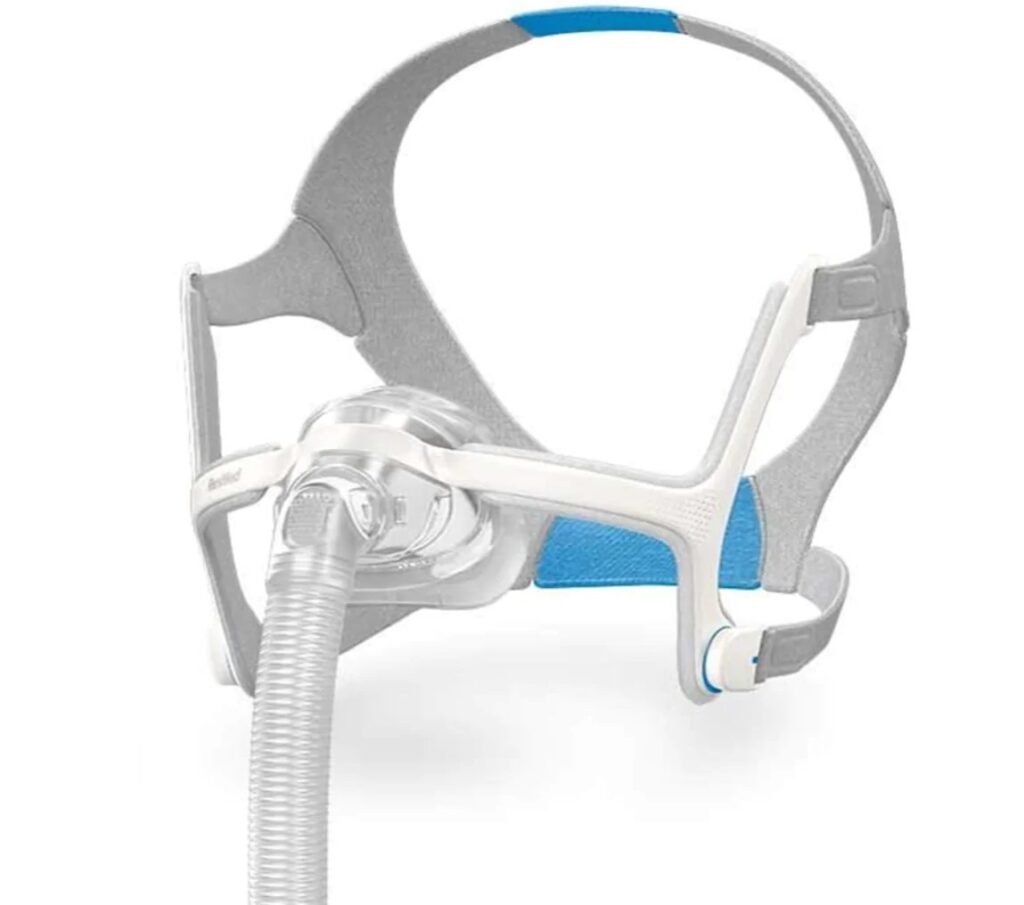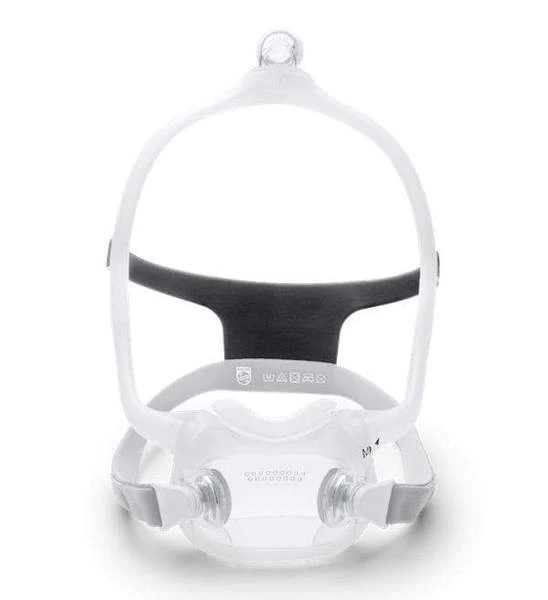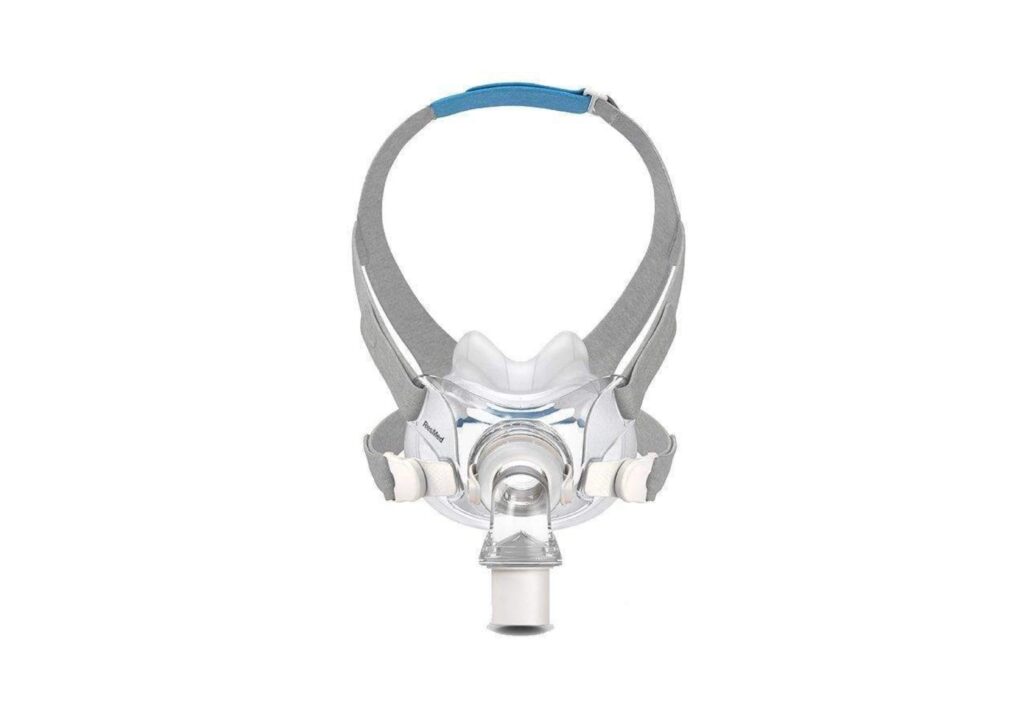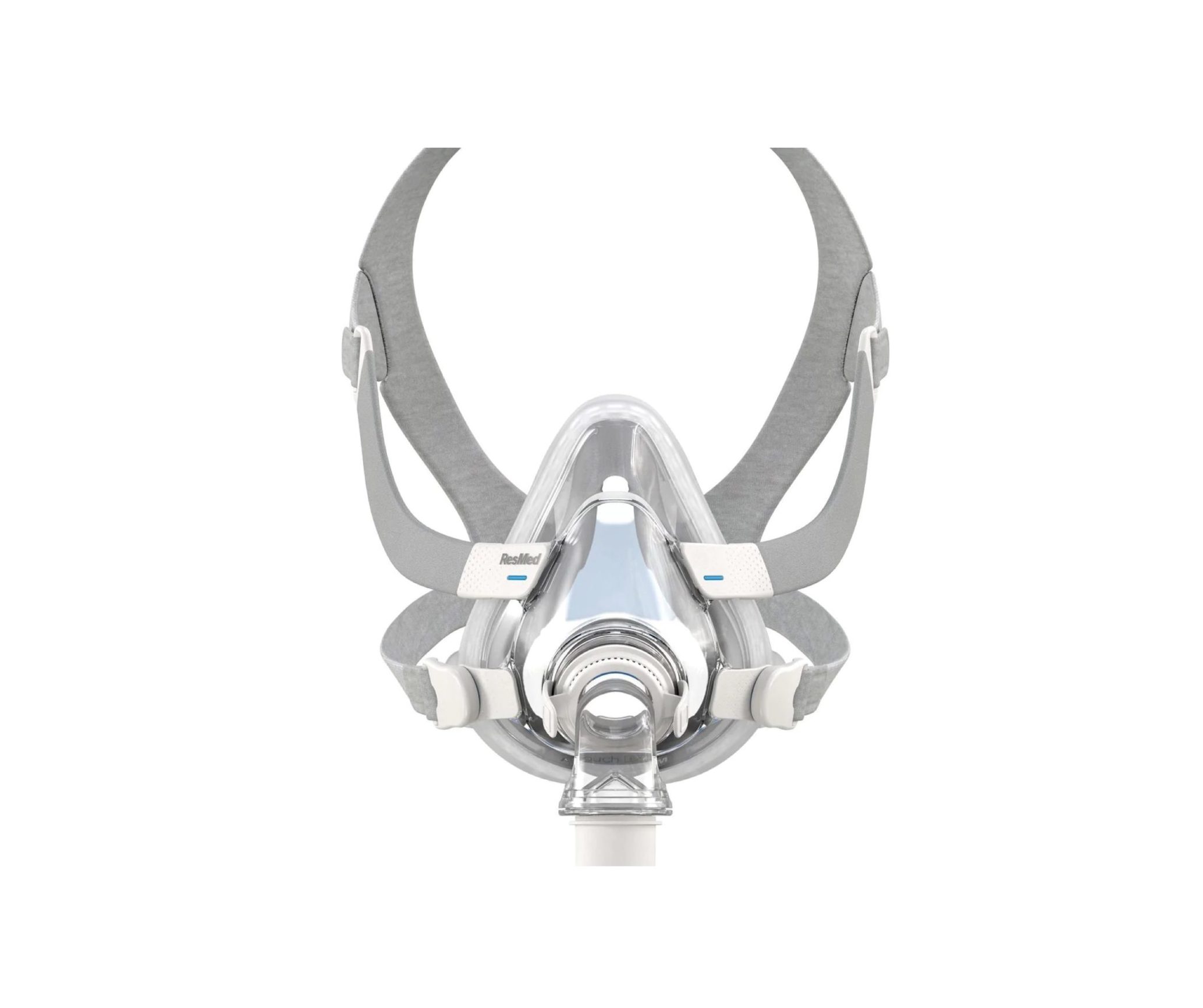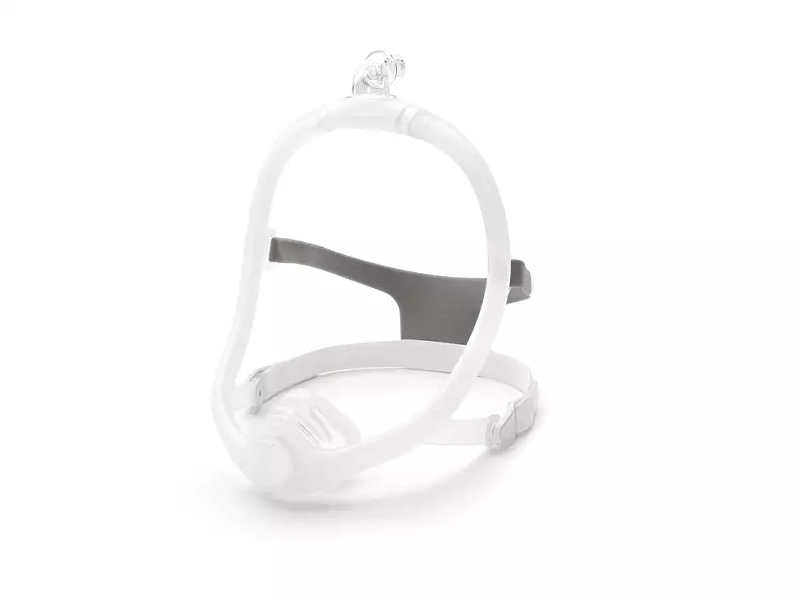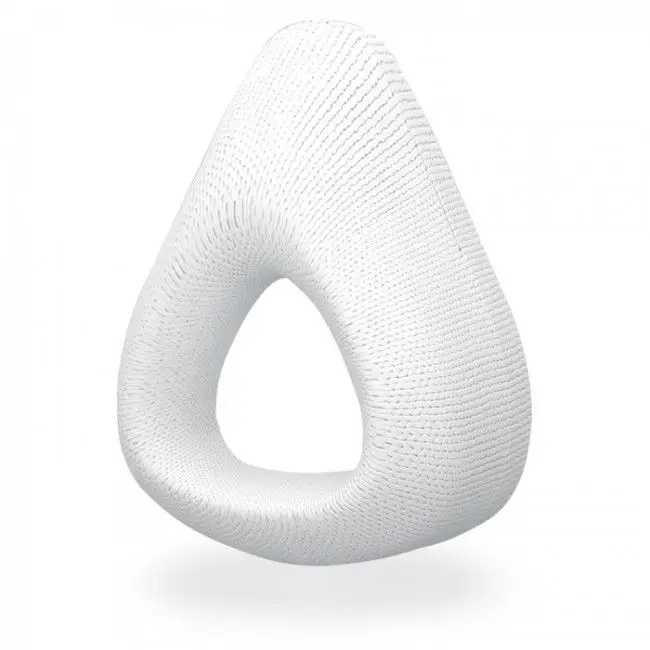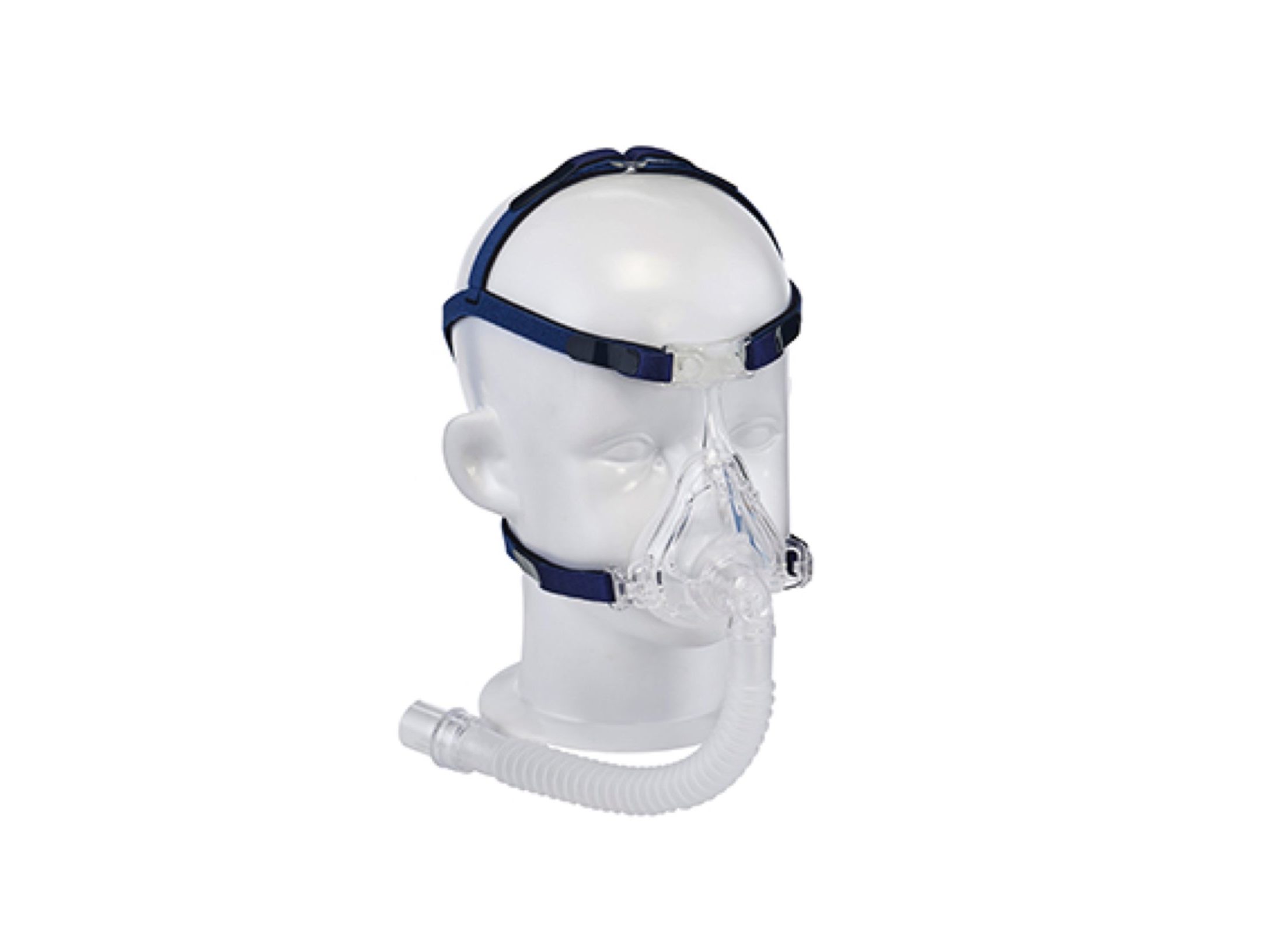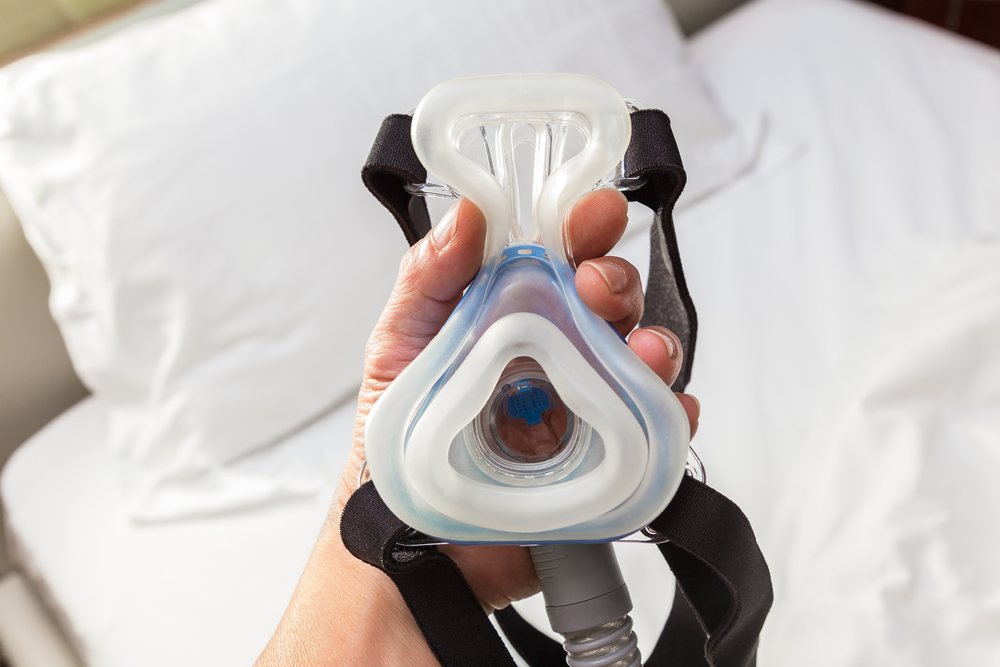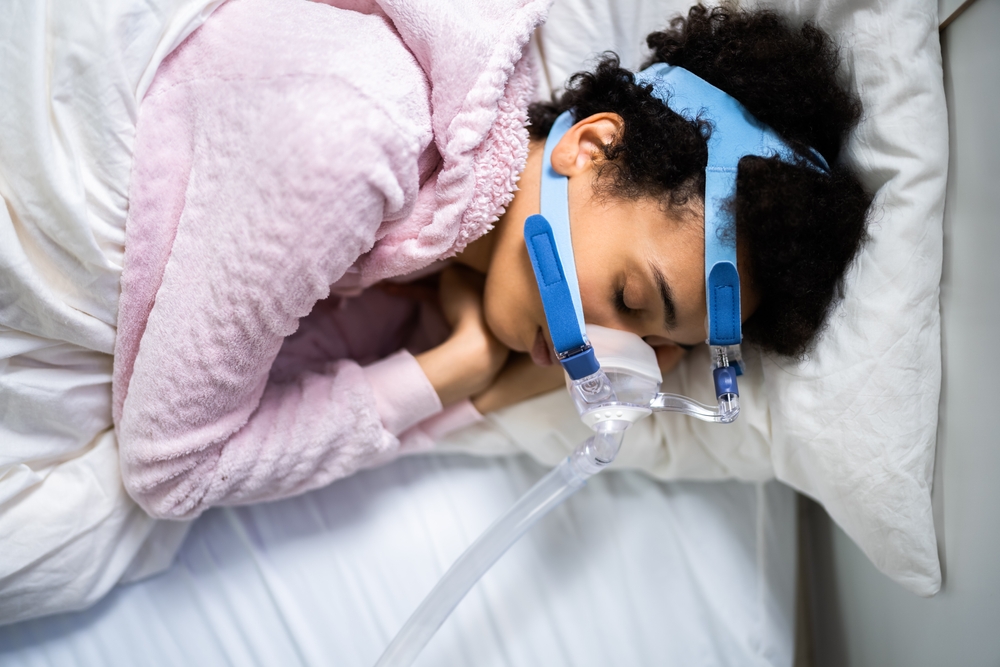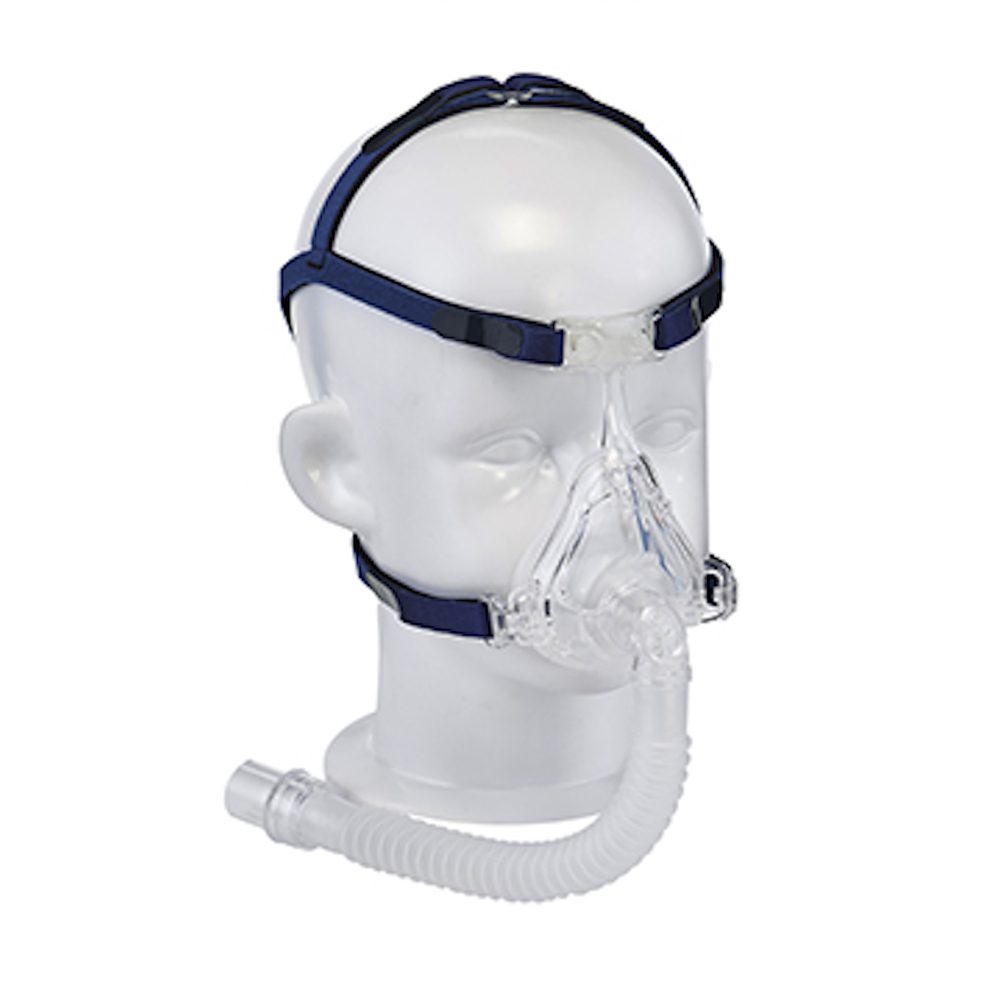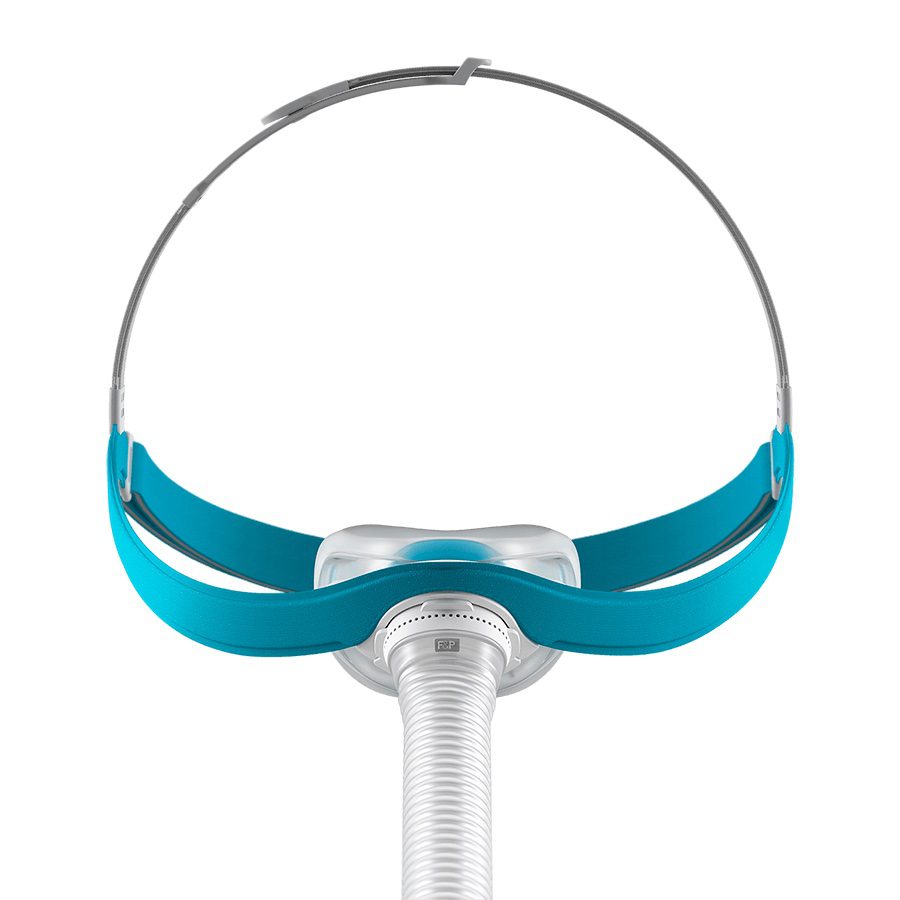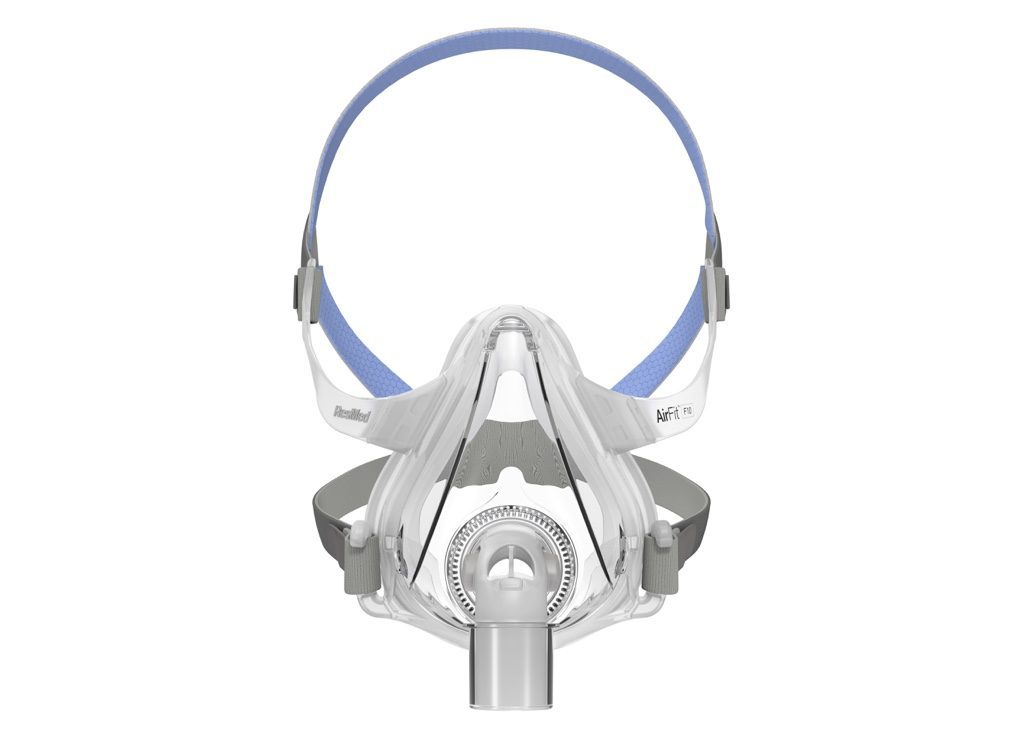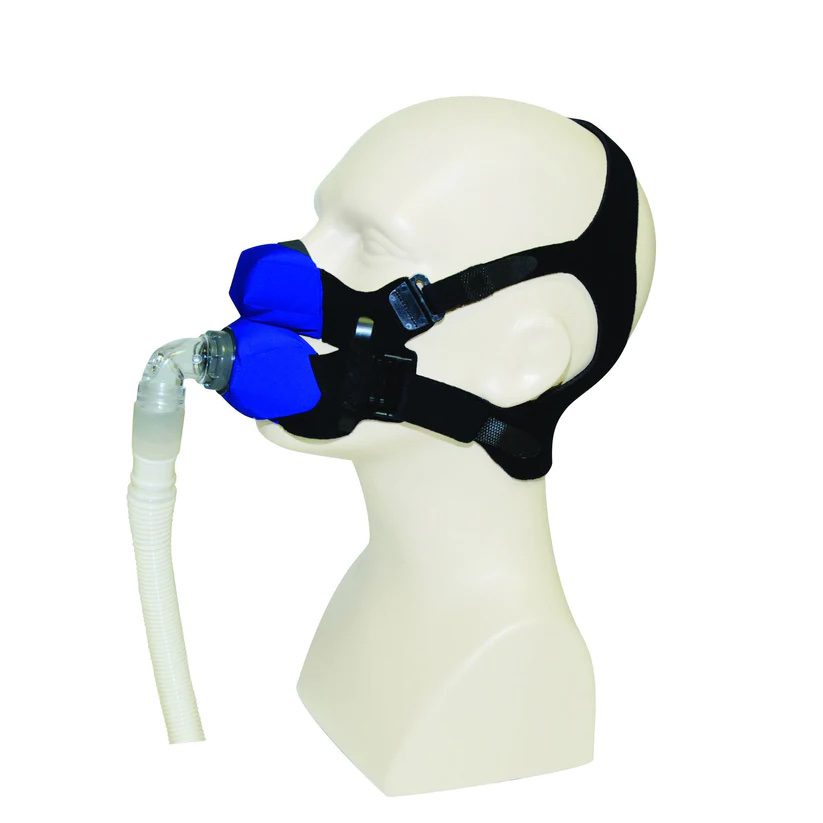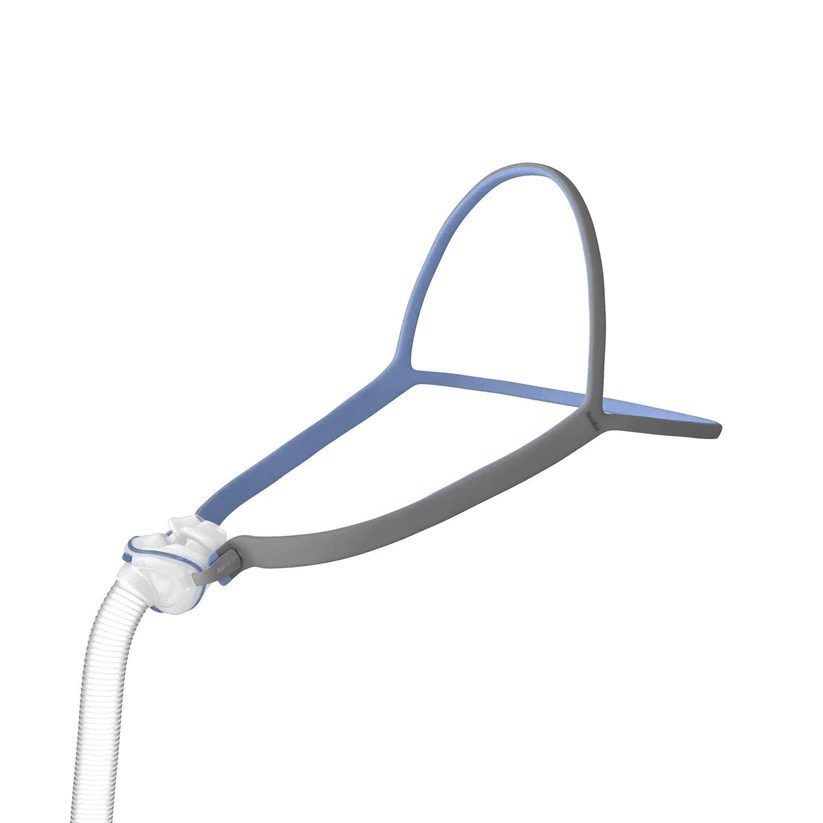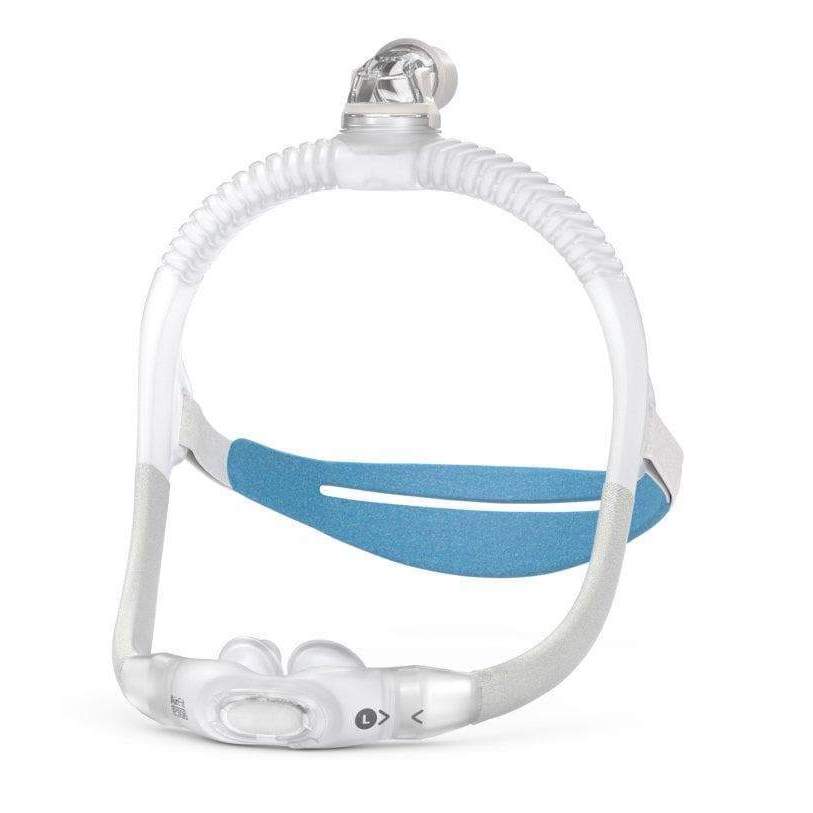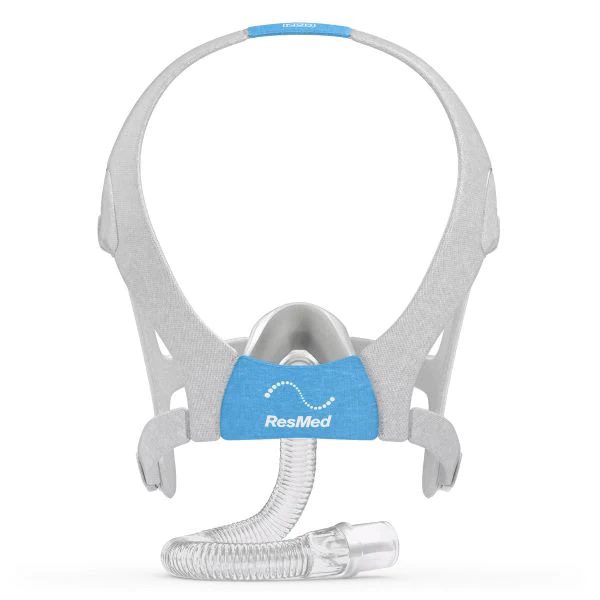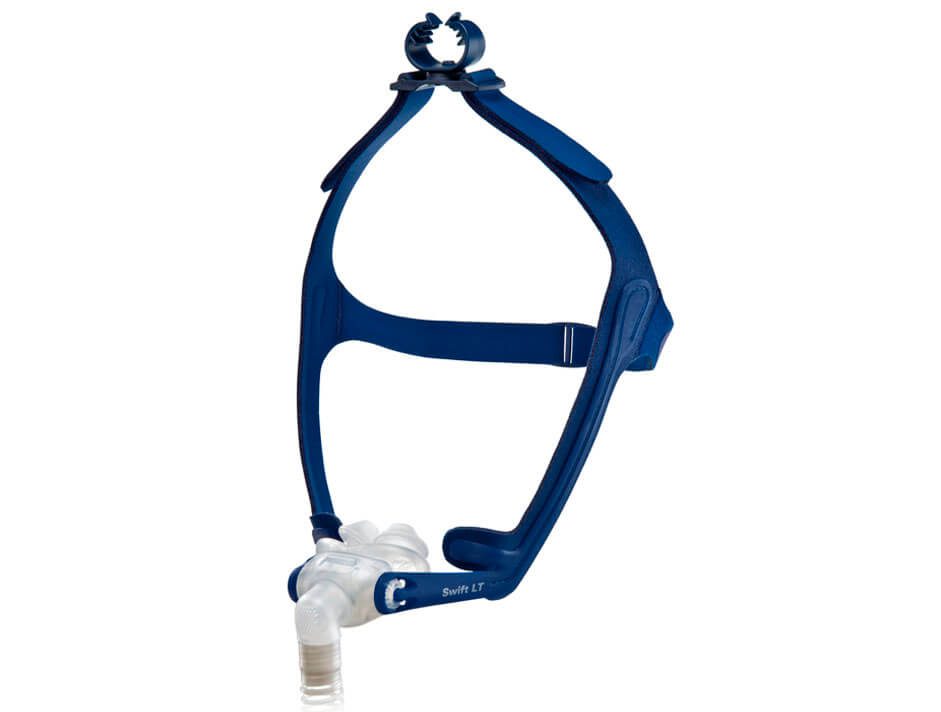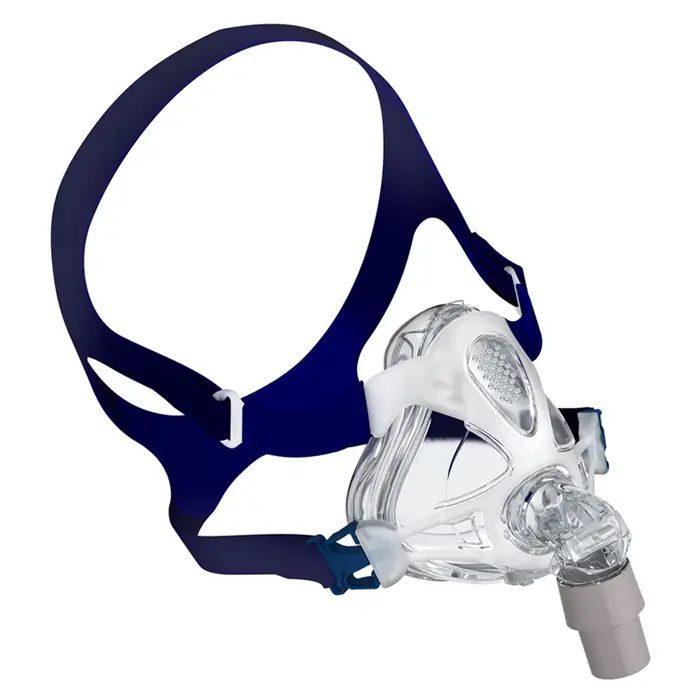Using a continuous positive airway pressure (CPAP) machine can be difficult for people who prefer to sleep on their sides, but the right mask can make it much easier.
Side sleeping is the most common sleep position, so manufacturers have designed several masks that are suitable for the job. No single mask is appropriate for every CPAP user, but matching your needs and preferences with a mask style enables you to find a comfortable and effective option.
After introducing you to some of the best CPAP masks for side sleepers, we’ll explain the differences between different mask styles, what to look for in a mask, and other steps you can take to sleep comfortably on your side while wearing a CPAP mask.
ResMed AirFit N20 Nasal CPAP Mask
Ideal For
- CPAP users who typically feel uncomfortable with silicone cushions
- People who get up often during the night
- Those who prefer to watch TV or read with their mask on
Who Should Keep Looking
- People who prefer a nasal pillow mask
- Those who sleep on both their sides and stomachs
- Especially active sleepers seeking a tighter seal
-
Price
$119
-
Size
Small, Medium, Large, Small for Her
The ResMed AirFit N20 offers CPAP users both comfort and performance, with plush headgear and a memory foam cushion that conforms to the face and offers a light seal. The AirFit N20 is an upgraded version of the AirFit N10. While the two are similar nasal masks, ResMed incorporated user feedback to ensure that the N20 is comfortable for all sleeping positions.
Padded headgear provides an open field of view, likely attracting CPAP users who watch TV in bed or who have experienced claustrophobia with other masks. Since the frame is flexible, it also adapts to different face shapes and does not dig into the sleeper’s face if they lie on their side. The headgear magnetically clips into place on the frame, making it easy to adjust.
The nasal mask fits securely over the nose, while the memory foam cushion maintains a seal even when the sleeper rolls over or changes positions. However, if you prefer a tighter seal, we recommend opting for a model with a silicone cushion. Since the mask also has a quick-release elbow to detach from the tubing, users can avoid taking off their mask if they get up during the night.
Sleep Doctor offers a subscribe and save option on CPAP masks, allowing you to schedule regular mask deliveries while saving 5% on each purchase. You can return the ResMed AirFit N20 within 30 days of delivery.
Use this SleepApnea.org link for the most current discount on ResMed products
Shop NowPhilips Respironics DreamWear Silicone Pillow CPAP Mask
Ideal For
- CPAP users who prefer a minimally invasive mask
- Active sleepers who find the hose connection cumbersome
- People with facial hair
Who Should Keep Looking
- Customers who dislike top-mounted hose connections
- People who have sinus conditions
- Side sleepers who are very sensitive to pressure on their cheeks
-
Price
$110
-
Size
Small/Medium/Medium-Wide/Large
The DreamWear Nasal Pillows CPAP Mask with Headgear is a nasal pillow model from Philips Respironics. Its unique design makes it ideal for many side sleepers, while its budget-friendly price tag appeals to value seekers.
Instead of connecting to the front of the nasal pillow, the DreamWear’s air tubing connects at the top of the user’s head. Tubing continues inside the headgear to connect with the nasal pillow, creating a streamlined design that allows users to wear glasses and maintain their full range of vision.
Adjustable arms hold the silicone pillow to the user’s nostrils, creating a firm seal that holds up well to movement and position changes. While most people are likely to find the DreamWear Silicone Pillow CPAP Mask comfortable when sleeping on their side, the tubing inside the headgear makes it slightly firmer than some competitors.
Small, medium, and large sizes are available. The size options, combined with the unique headgear design, makes the mask a good choice for people who experience skin irritation with other masks.
The Sleep Doctor allows you to return the DreamWear Nasal Pillows CPAP Mask with Headgear within 30 days. Please note that a 15% restocking fee will be subtracted from your refund.
Use this SleepApnea.org link for the most current discount on Philips Respironics products
Shop NowResMed AirFit F30i Full Face CPAP Mask
Ideal For
- People who prefer to read or watch TV with their masks on
- Those seeking a mask with minimal facial contact
- Active sleepers who toss and turn at night
Who Should Keep Looking
- Those who prefer a more traditional full-face mask
- Shoppers on a tighter budget
- Nasal mask users who want a mask that covers the bridge of their nose
-
Price
$159
-
Size
Small Frame, Standard Frame, Large Frame
The ResMed AirFit F30i is a variation of the brand’s traditional, full-face F30 mask. The mask is designed for minimal facial contact to ensure comfortability for a wide swath of CPAP users.
The F30i works like a hybrid of a nasal pillow mask and a full-face mask. Air flows from the tubing connection through the frame itself, making the mask feel less cumbersome. A silicone cushion sits under the nose to prevent irritation or red marks on the bridge of the nose. Ventilation holes in the front of the cushion quietly diffuse pressurized air, so you and your partner should notice very few noise disturbances.
Top-of-head tubing ensures your sight is not obstructed, so you can freely watch TV or read before bed with your mask on. The tubing also allows for 360 degrees of rotation, so sleepers can easily change sides or positions. Two buttons on the elbow swivel enable you to detach the mask from your CPAP machine, while magnetic clips help you to detach the mask quickly and easily. This makes the mask a great choice if you tend to get up throughout the night and don’t want to feel restricted.
You can choose between small, standard, and large frames in four cushion sizes: small, small wide, medium, and wide. ResMed provides a printable sizing template to help you find the best cushion size for your nose. The Sleep Doctor allows you to return the ResMed AirFit F30i within 30 days for a refund minus a 15% restocking fee.
Use this SleepApnea.org link for the most current discount on ResMed products
Shop NowWhy We Picked These
We selected our featured CPAP masks based on in-depth research into customer experiences, mask construction, features, brand trust, and supply chain issues. Our team has decades of combined experience with CPAP products, giving us the insight essential to direct readers towards the products that work best for their needs. We do the research, leverage our expertise, and contextualize our findings to make shopping for CPAP products as easy as possible.
What You Should Consider When Choosing a CPAP Mask for Side Sleeping
It can be difficult to find the right CPAP mask when you prefer to sleep on your side, but understanding what to look for and consider can help you choose the best option for you.
CPAP Mask Considerations for Side Sleepers
| Price | Most headgear and mask sets cost around $100 to $150, but replacement parts can vary in price significantly. It’s worth calculating the yearly cost for the necessary replacement parts before you make your purchase. Your insurance may also cover some of the associated costs, so you might want to investigate what is included and how to make a claim. |
| Size and Fit | Masks usually come in small, medium, and large, though some brands offer non-standard sizes, such as wide options. Depending on the manufacturer, you may also be able to order a set of cushions in different sizes to determine what fits you the best. |
| Compatibility | Although nearly all CPAP machines are compatible with all CPAP masks, some specialized machines may require you to use a specific mask model. Before purchasing a CPAP mask, double-check your machine’s specifications. |
| CPAP Pillow | Pillows designed for use with CPAP therapy are excellent options for side sleepers. Cutouts leave room for a CPAP mask and tubing while stabilizing the sleeper’s position. Depending on the shape of the CPAP pillow, some masks may work better with the pillow than others. |
| CPAP Chinstrap | Although nasal masks and nasal pillow masks are the most comfortable options for most side sleepers, full face masks work much better for people who breathe through their mouths. A CPAP chinstrap gently holds the mouth closed to reduce mouth breathing, potentially making nasal masks and nasal pillow masks viable options. |
| Comfort | Everyone wants a comfortable CPAP mask, but what is comfortable for one person may not work for another. To find the right mask for you, ask your health care team for personalized advice and consider a wide range of mask options. A secure fit that doesn’t dig in is usually best. Many people have to try more than one mask before they discover what works for them. |
| Quality Materials | All masks need to be replaced regularly, but choosing a well-made mask and headgear set ensures you can use it for its full lifespan. High-quality materials also lead to a more comfortable and effective mask. |
Are There Benefits to Side Sleeping With a CPAP Mask?
Even though many CPAP masks make it hard to sleep on your side, side sleeping is generally the best position for people with obstructive sleep apnea (OSA). Sleeping on your back or stomach can cause more airway obstruction caused by gravity pulling on your airway tissues, while side sleeping helps negate this effect.
Types of CPAP Masks for Side Sleepers
Full face masks, nasal masks, and nasal pillow masks are the three most common styles of CPAP masks. Each may be more or less suitable for an individual depending on a range of factors, including but not limited to their preferred sleep position.
Your health care team is your best source for information when deciding on a CPAP mask style. They can take your individual needs and preferences into account to determine what style will provide the best balance of comfort and effectiveness.
Nasal Mask
Nasal masks are usually triangular, with one point at the bridge of the nose and the bottom two points resting above the upper lip. This style is a popular middle ground between the robustness of a full face mask and the comfort of a nasal pillow mask.
| Benefits: | You Shouldn’t Use One If: |
|---|---|
|
|
Nasal Pillow Mask
Instead of delivering pressurized air via a plastic mask, nasal pillow masks use a silicone cushion with inserts that rest inside the nostrils. The cushion is then held in place by the headgear. While not right for everyone, nasal pillow masks are among the most popular options for side sleepers.
| Benefits: | You Shouldn’t Use One If: |
|---|---|
|
|
Full Face Mask
Full face masks are a traditional form of CPAP mask that covers both the nose and mouth. While bulkier and less comfortable for side sleepers than other options, full face masks come in a range of styles that allow users to choose what works best for them.
| Benefits: | You Shouldn’t Use One If: |
|---|---|
|
|
Do You Need a Prescription for a CPAP Mask?
Just like CPAP machines, CPAP masks require a prescription to purchase. The FDA considers CPAP masks Class II devices, meaning they require an intermediate level of control to ensure patient safety. CPAP mask components, such as replacement pillows, can be purchased without a prescription.
Will Health Insurance or Medicare Cover the Cost of Your CPAP Mask?
Many insurance carriers provide partial coverage for CPAP masks because they are considered durable medical equipment. However, some expenses are nonreimbursable, and there are generally limits on how frequently you can replace parts. Co-pays and deductibles may apply, and there may be authorization requirements. Check your insurance plan documents to learn the policies. You may also want to reach out to the insurance company for more information.
How you file a claim depends on the insurer. You may be able to buy your mask through an in-network provider, then submit a claim to your insurance carrier along with a copy of your receipt and prescription. Your insurance company should have a designated claims form.
Medicare may also cover a portion of your mask purchase for qualifying patients. Once you meet your part B deductible, Medicare covers up to 80% of the Medicare-approved amount for CPAP supplies, including CPAP masks. You must purchase from an approved supplier and show compliance.
Where Can You Buy a CPAP Mask for Side Sleeping?
CPAP masks can be purchased from a sleep specialist, a brick-and-mortar CPAP store, or an online CPAP retailer.
Some side sleepers prefer to purchase their mask through their specialist or at a brick-and-mortar store because these options usually provide more opportunities for personalized advice and support. Others favor the low prices and wide selections of online CPAP retailers.
CPAP Masks for Side Sleeping
Choosing a new CPAP mask can be confusing even for those who have purchased a mask previously. If you have any concerns or questions about what option you should choose, your healthcare team can help you find the best mask for you.
While it is technically possible to sleep on your side with any type of CPAP mask, most full face masks and some nasal masks are uncomfortable when worn in this position. The position can also compromise the seal on some masks, making your therapy less effective.
Choosing a low-profile mask with soft or flexible headgear can make side sleeping much more comfortable. CPAP pillows with cut-outs are another option for side sleepers, particularly those who need to use a full face mask.
Side sleepers with long hair may pull their hair back or use a head cover with their CPAP mask. Scarves, sleep caps, bonnets, and specialized CPAP caps are all common solutions to help prevent matting and tangling.
Some people find head covers uncomfortably warm during the night. To stay cool, consider choosing a lightweight cap made of a breathable fabric, such as cotton.
Hand washing with soap and warm water is the best way to clean a CPAP mask and headgear. This helps remove skin oils, dirt, and debris without damaging the components. The soap should be gentle and free from additives, such as moisturizers, which may otherwise build up on the mask or attract dirt. After you’re done washing, allow the components to air dry before using them again.
CPAP masks and headgear should be cleaned at least weekly, while cushions should be cleaned daily. Allowing dirt and germs to build up on your mask could increase the risk of illness and jeopardize the seal.
Most experts suggest that the entire CPAP mask, including the headgear, should be replaced every three to six months. You should also replace the cushion at least once a month, though some prefer to switch it out more often.
If you see signs of wear or damage on the mask or any of its components, replace it as soon as possible regardless of whether it’s due. Damaged equipment may make your PAP therapy less effective.


